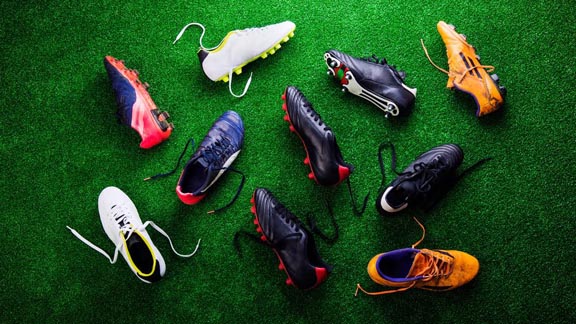
No matter what your role in football is, either lineman, quarterback, or defensive back, you will always need football cleats. This can offer support, traction, and comfort to your feet. Indeed, the cleats can make a big difference in your performance. Without cleats, you can increase your chances of having injuries as you make tackles and cuts.
Selecting a pair of football cleats is an exciting experience. Today, there are various styles that are available in the market. To get the best deal out of your money, there are various factors to remember as you buy football cleats.
Since football cleats are one of the most important equipment in the game, you must learn how to select the best option based on your playing style and position. Consider the following:
1. Know the Parts of Cleats
The majority of the top Nike football cleats reviewed have the same design. Remember that every part of the cleat has an impact on how you play the game. Here are the parts of a football cleat that you must know:
Upper – This includes the straps or laces that helps players tighten their cleats to have a snug fit. The materials used for this part include leather or synthetic materials. Cleats need to withstand rough weather conditions and different intensities of impact while playing. Other cleats use breathable materials so the players do not feel restricted during the game. There are three (3) kinds you can choose from such as low-cut, mid-cut, and high-cut.
Midsole – This cushions the feet of any player out there. Most refer to it as footbed as it absorbs any kind of impact that the player goes through. Midsoles support your feet during games but the durability depends on the foam and style used. When you use a midsole, you feel comfortable with any kind of game, either practice or actual games.
Outsole – The outsole refers to the bottom of the cleats and usually made of plastic or molded rubber. It helps the players maintain their balance as they provide traction during games. Any player who uses these helps you tackle opponents, defend your position, and finish the game head-on. With the diverse selection of cleats in the market, you can choose from different cleats with different abilities.
Studs or Cleats – Studs help players gain traction whenever they play in the field. These help players accelerate when they go on offense and also stop and cut opponents when they play on defense.
Heel – Heels help players maintain balance during the game. It protects the players’ heels from collapsing from sudden twists, turns, or even strong tackles. Players bounce back and reduce tumbling down with sturdy heels on their cleats.
In sum, it is important to understand the parts of the cleat. This is important when reading product reviews and descriptions.
2. Understand the Cleat Styles
It is best to know what kind of football cleat cut is right for you. Determine your desired level of ankle support as you select the cleat. Each style offers its own benefit to the player depending on the position, foot, and ankle health:
Low-cut – This type of cleat cut stops before the ankle. This product allows for agility and better navigation since it is lightweight. Players who are receivers, running backs and defensive backs opt to have low-cut cleats. Low-cut cleats free the ankles from restrictions and make the player reach high speed.
Mid-cut – This cut can extend to the ankle and support it without any restriction to the movement. Players who are linebackers, running backs, quarterbacks, and tight ends choose to have the mid-cut cleats.
High-cut – This type of cleat can offer the most support for the ankle. It can prevent rolled or twisted ankles. This can lace above the ankle. Indeed, high-cut cleats can boost support. However, it can also limit the mobility and speed of athletes wearing them because of their weight. Indeed, this product is a good option for linemen, center, and guards.
3. Cleat Types
You can choose between two types of cleat—detachable and molded types. When selecting a pair of cleats, determine the field conditions, regulations, and your personal preference.
Molded Cleats – This is permanently installed at the bottom of the shoe. Athletes wear this for traction. Furthermore, molded cleats can offer versatility on various playing surfaces. This type of cleat is less demanding of maintenance than the detachable cleats. High school teams, youth leagues, and casual players prefer the molded cleats since these are affordable.
Detachable Cleats – This can be changed easily and offers an advantage during unpredictable weather conditions. Studs that are shorter are preferred when running on dry grounds while shoes with longer studs are good for playing on wet grounds.
Conclusion
In sum, football cleats are shoes that protect athletes as they play the game. Football cleats can provide support, traction, and protection while trying to get into the end zone. Indeed, it is important for you to find the right cleats for your needs. Remember the type of cleats, style, and parts of the cleat to have the best deal out of your money and for the best football experience.




